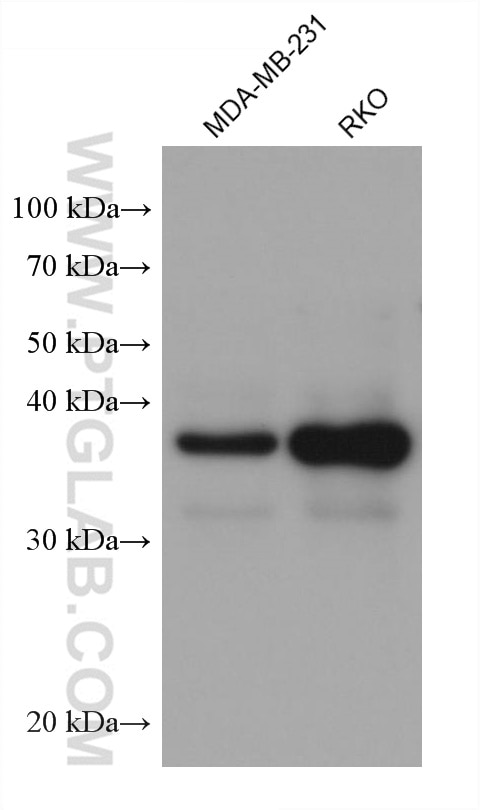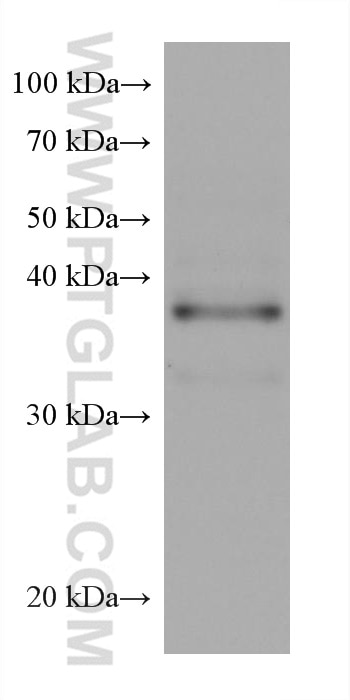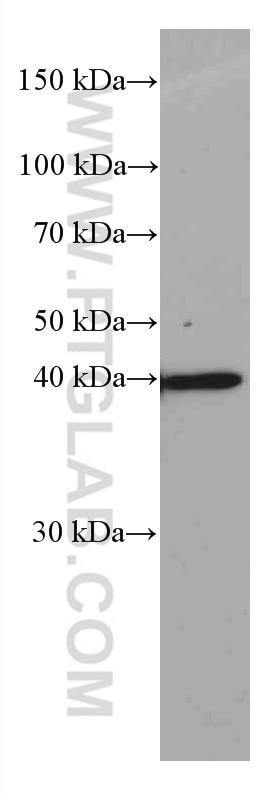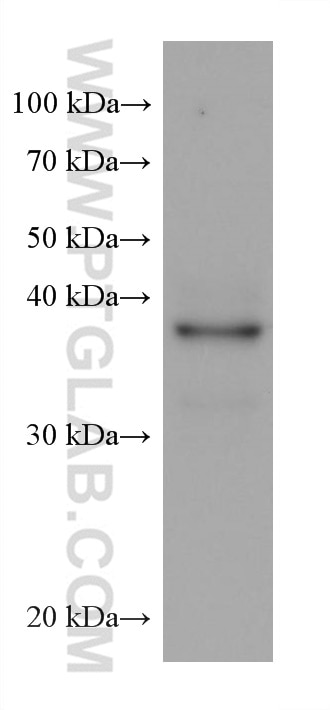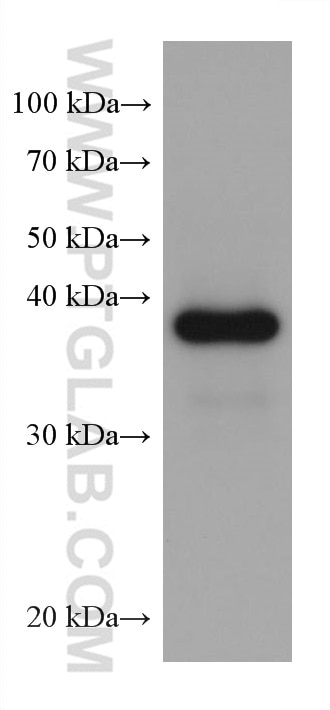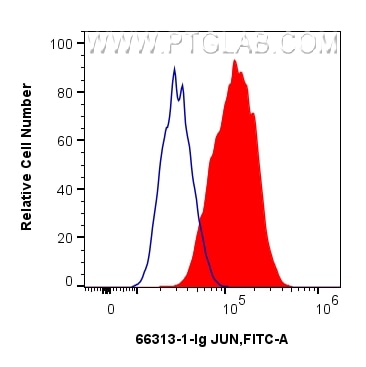Anticorps Monoclonal anti-JUN
JUN Monoclonal Antibody for WB, Indirect ELISA
Hôte / Isotype
Mouse / IgG1
Réactivité testée
Humain, rat, souris
Applications
WB, Indirect ELISA
Conjugaison
Non conjugué
CloneNo.
1G6B11
N° de cat : 66313-1-PBS
Synonymes
Galerie de données de validation
Informations sur le produit
66313-1-PBS cible JUN dans les applications de WB, Indirect ELISA et montre une réactivité avec des échantillons Humain, rat, souris
| Réactivité | Humain, rat, souris |
| Hôte / Isotype | Mouse / IgG1 |
| Clonalité | Monoclonal |
| Type | Anticorps |
| Immunogène | JUN Protéine recombinante Ag17639 |
| Nom complet | jun oncogene |
| Masse moléculaire calculée | 331 aa, 36 kDa |
| Poids moléculaire observé | 39 kDa |
| Numéro d’acquisition GenBank | BC068522 |
| Symbole du gène | JUN |
| Identification du gène (NCBI) | 3725 |
| Conjugaison | Non conjugué |
| Forme | Liquide |
| Méthode de purification | Purification par protéine A |
| Tampon de stockage | PBS only |
| Conditions de stockage | Store at -80°C. 20ul contiennent 0,1% de BSA. |
Informations générales
What is the molecular weight of JUN?
The molecular weight of JUN is approximately 39 kDa.
What is the cellular localization of JUN?
JUN expression can be located in the nucleus. However, ubiquitinated JUN colocalizes with lysosomal proteins (PMID: 15469925).
What is the function of JUN?
JUN is a basic leucine zipper (bZIP) transcription factor that recognizes and binds to a consensus heptamer motif of 5'-TGA[CG]TCA-3' in the enhancer region of target genes. JUN acts as either a homo- or heterodimer and binds to the DNA to regulate transcriptional activity, specifically promoting the activity of NR5A1 when phosphorylated by HIPK3, leading to increased steroidogenic gene expression upon the stimulation of the cAMP signaling pathway (PMID: 9732876).
What post-translational modifications is JUN subjected to?
JUN is acetylated at Lys-271 by EP300 (PMID: 11689449). JUN is phosphorylated by PLK3 following exposure to hypoxia or UV irradiation, which leads to increased DNA-binding activity (PMID: 27281822), and also by PAK2 at numerous threonine residues to promote cell proliferation and transformation (PMID: 21177766). JUN is also phosphorylated by DYRK2 at Ser-243, which primes it for subsequent further phosphorylation by GSK3B and reduces its ability to bind DNA (PMID: 22307329).
What is the role of JUN in disease?
Activation of JUN is linked with proliferation and angiogenesis in invasive breast cancers (PMID: 16733206).
